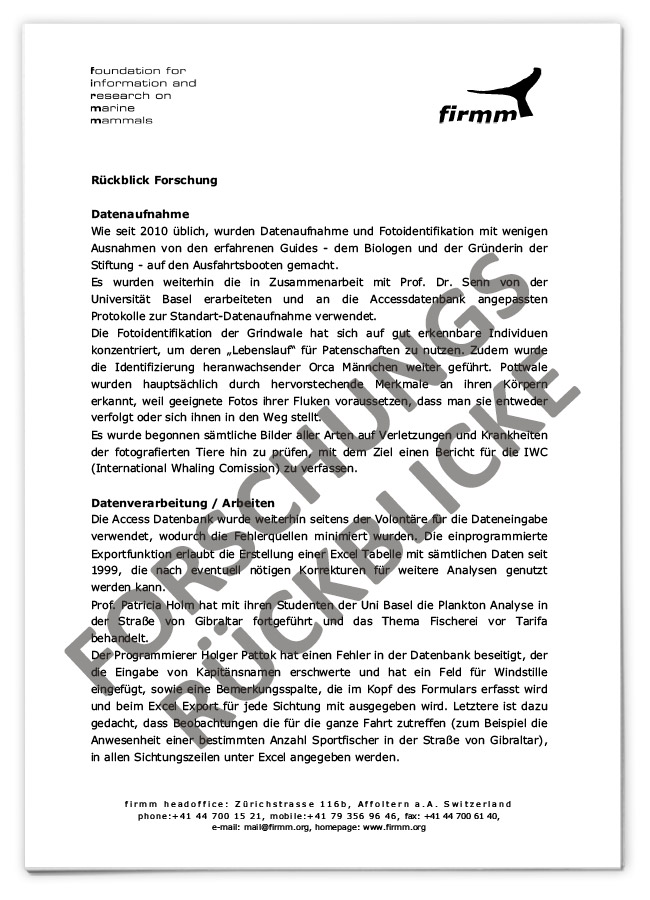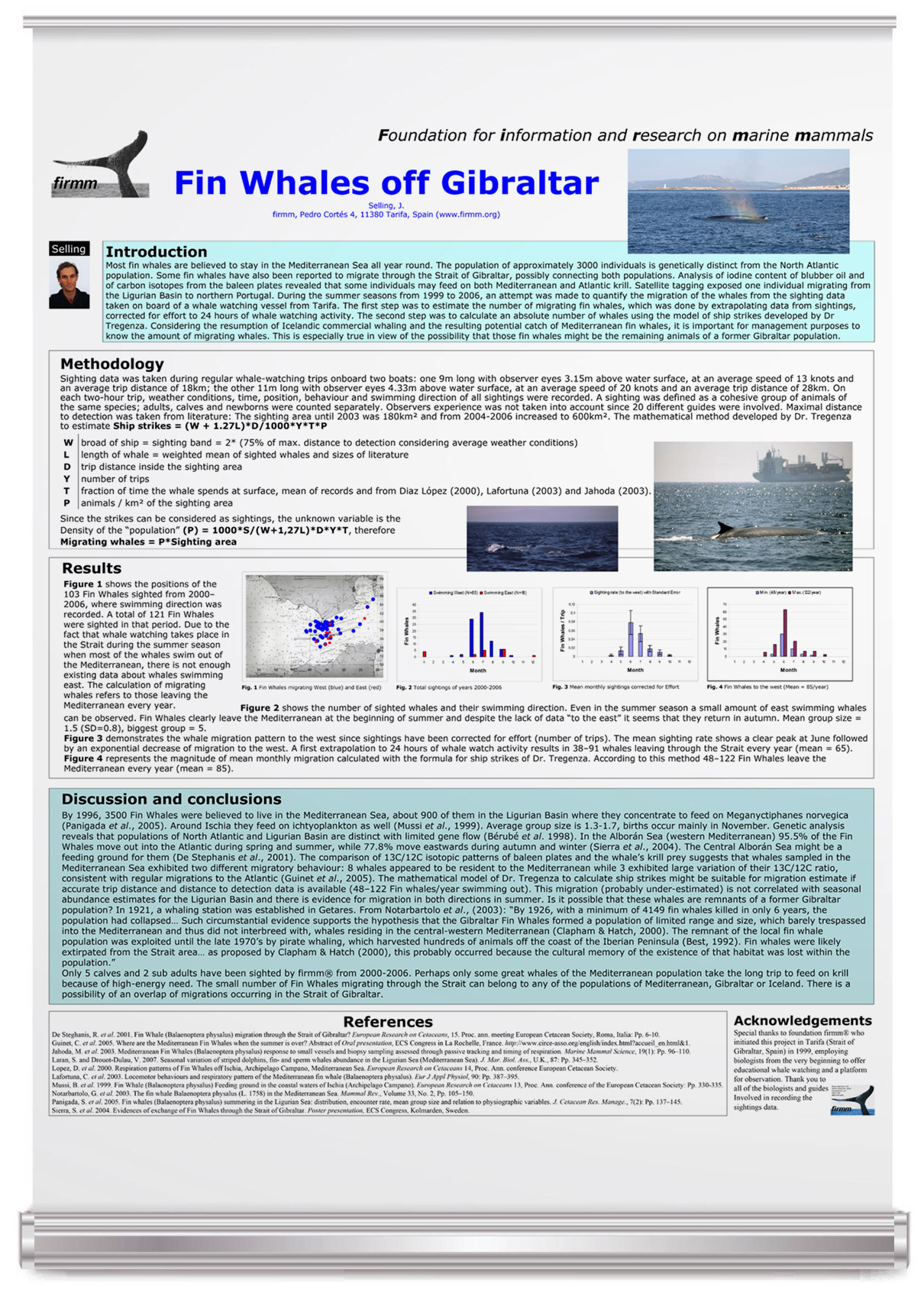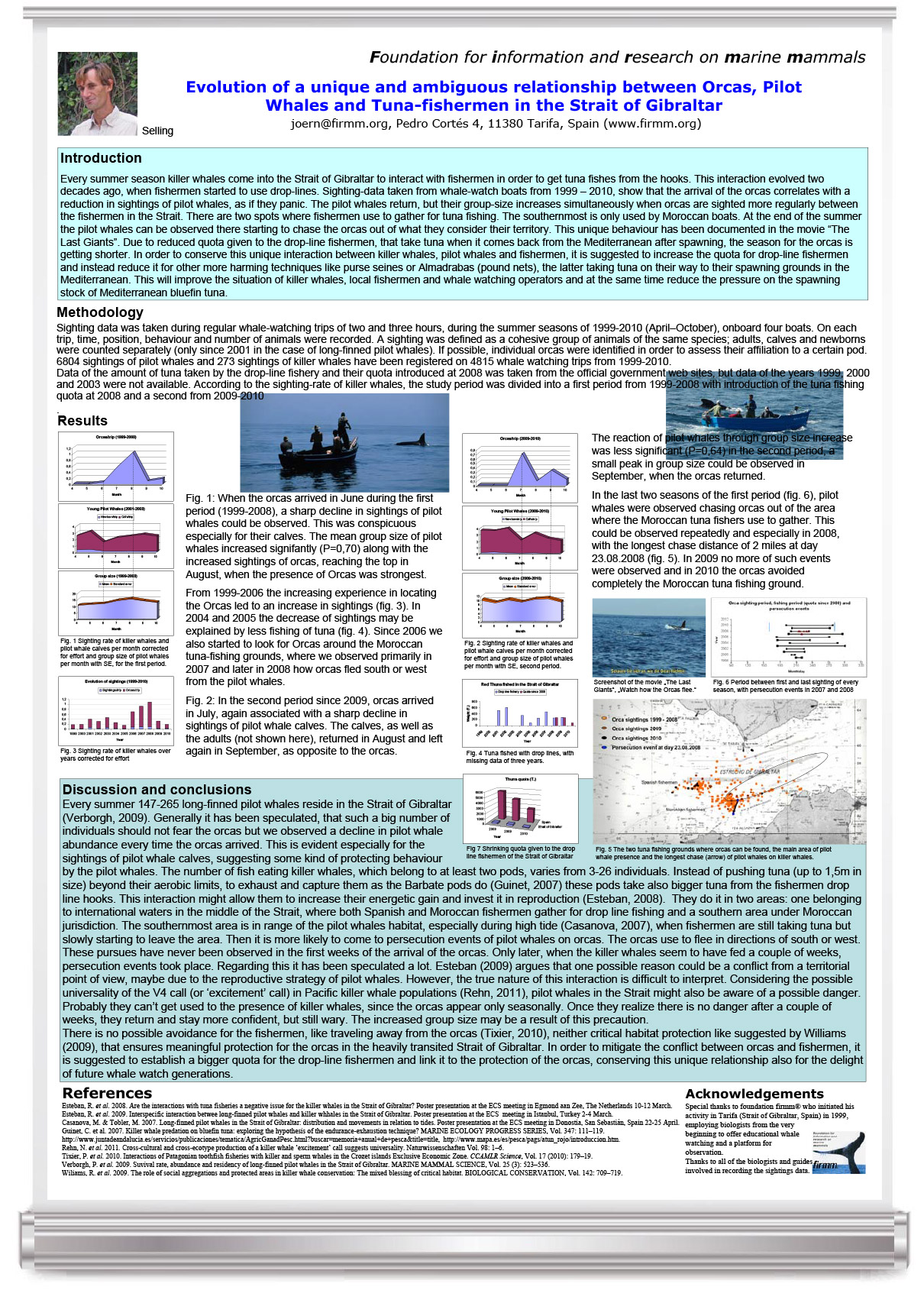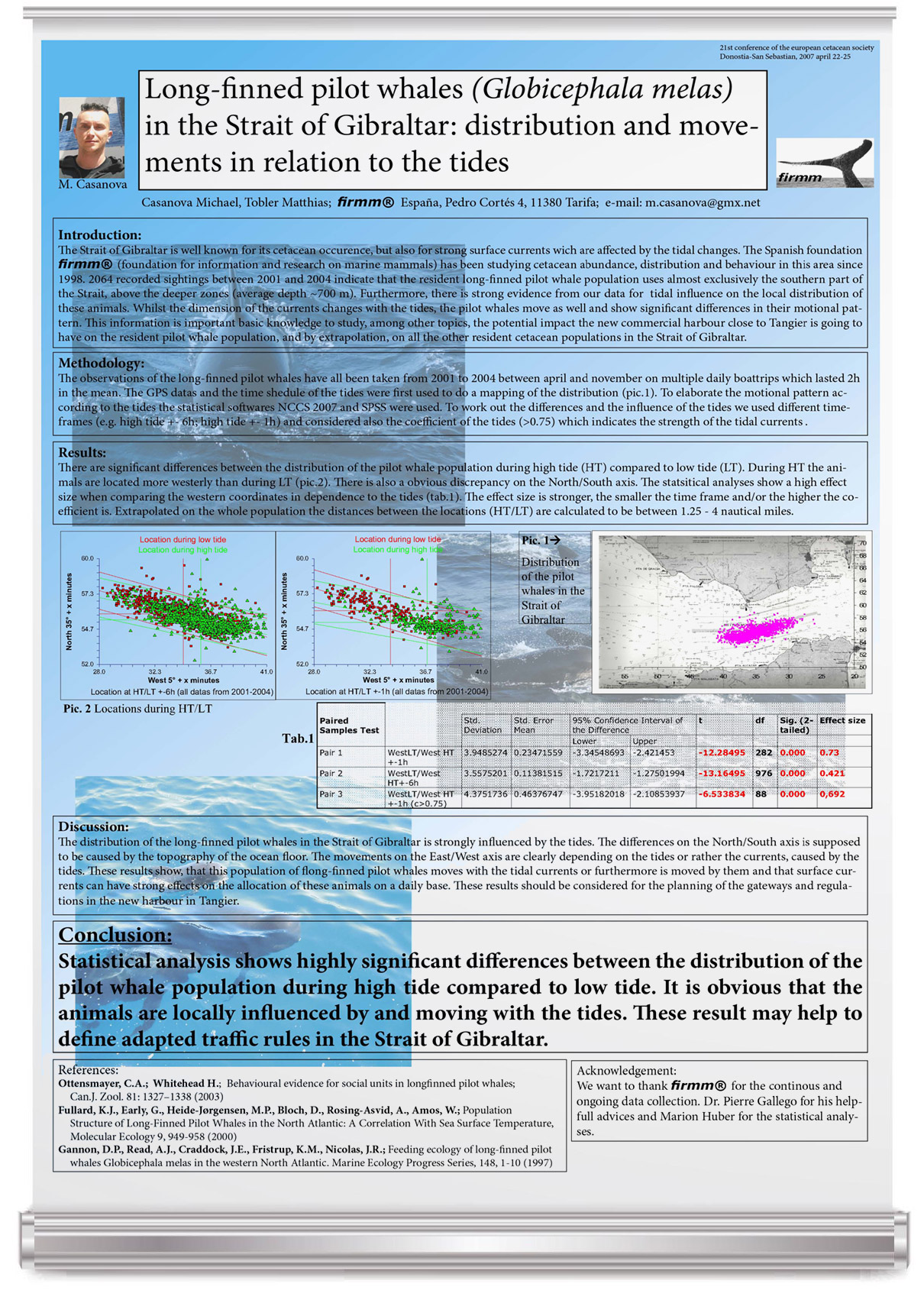

firmm Forschungsberichte

Fin Whales off Gibraltar
Fin Whales off Gibraltar
Kongress-Poster von Jörn Selling, firmm
Präsentation zur ECS-Konferenz (ECS = european cetacean society) 2007
(in Englisch)
Abstract
Most fin whales are believed to stay in the Mediterranean Sea all year round. The population of approximately 3000 individuals is genetically distinct from the North Atlantic population. Some fin whales have also been reported to migrate through the Strait of Gibraltar, possibly connecting both populations. Analysis of iodine content of blubber oil and of carbon isotopes from the baleen plates revealed that some individuals may feed on both Mediterranean and Atlantic krill. Satellite tagging exposed one individual migrating from the Ligurian Basin to northern Portugal. During the summer seasons from 1999 to 2006, an attempt was made to quantify the migration of the whales from the sighting data taken on board of a whale watching vessel from Tarifa. The first step was to estimate the number of migrating fin whales, which was done by extrapolating data from sightings, corrected for effort to 24 hours of whale watching activity. The second step was to calculate an absolute number of whales using the model of ship strikes developed by Dr Tregenza. Considering the resumption of Icelandic commercial whaling and the resulting potential catch of Mediterranean fin whales, it is important for management purposes to know the amount of migrating whales. This is especially true in view of the possibility that those fin whales might be the remaining animals of a former Gibraltar population.
Weitere Ausarbeitungen / Publikationen anschauen …

Evolution of a unique and ambiguous relationship between Orcas, Pilot Whales and Tuna-fishermen in the Strait of Gibraltar
Evolution of a unique and ambiguous relationship between Orcas, Pilot Whales and Tuna-fishermen in the Strait of Gibraltar
Kongress-Poster von Jörn Selling, firmm
Präsentation zur ECS-Konferenz (ECS = european cetacean society) 2011
(in Englisch)
Abstract
Every summer season killer whales come into the Strait of Gibraltar to interact with fishermen in order to get tuna fishes from the hooks. This interaction evolved two decades ago, when fishermen started to use drop-lines. Sighting-data taken from whale-watch boats from 1999 – 2010, show that the arrival of the orcas correlates with a reduction in sightings of pilot whales, as if they panic. The pilot whales return, but their group-size increases simultaneously when orcas are sighted more regularly between the fishermen in the Strait. There are two spots where fishermen use to gather for tuna fishing. The southernmost is only used by Moroccan boats. At the end of the summer the pilot whales can be observed there starting to chase the orcas out of what they consider their territory. This unique behaviour has been documented in the movie “The Last Giants”. Due to reduced quota given to the drop-line fishermen, that take tuna when it comes back from the Mediterranean after spawning, the season for the orcas is getting shorter. In order to conserve this unique interaction between killer whales, pilot whales and fishermen, it is suggested to increase the quota for drop-line fishermen and instead reduce it for other more harming techniques like purse seines or Almadrabas (pound nets), the latter taking tuna on their way to their spawning grounds in the Mediterranean. This will improve the situation of killer whales, local fishermen and whale watching operators and at the same time reduce the pressure on the spawning stock of Mediterranean bluefin tuna.
Weitere Ausarbeitungen / Publikationen anschauen ...

Long-finned pilot whales in the Strait of Gibraltar: distribution and movements in relation to the tides
Long-finned pilot whales in the Strait of Gibraltar: distribution and movements in relation to the tides
Kongress-Poster von Michael Casanova, Matthias Tobler, firmm
Präsentation zur ECS-Konferenz (ECS = european cetacean society) 2007
(in Englisch)
Abstract
The Strait of Gibraltar is well known for its cetacean occurence, but also for strong surface currents which are affected by the tidal changes. The Spanish foundation firmm (foundation for information and research on marine mammals) has been studying cetacean abundance, distribution and behaviour in this area since 1998. 2064 recorded sightings between 2001 and 2004 indicate that the the resident longfinned pilot whales population uses almost exclusively the southern part of the Strait, above the deeper zones (Average depth ~700m). Furthermore, there is strong evidence from our data for tidal influence in the local distribution of these animals. Whilst the dimension of the currents changes with the tides, the pilot whales move as well and show significant differences in their motional pattern. This information is important basic knowledge to study, among other topics, the potential impact the new commercial habour close to Tangier is going to have on the resident pilot whale population, and by exploration, on all the other resident cetacean population in the Strait of Gibraltar.

